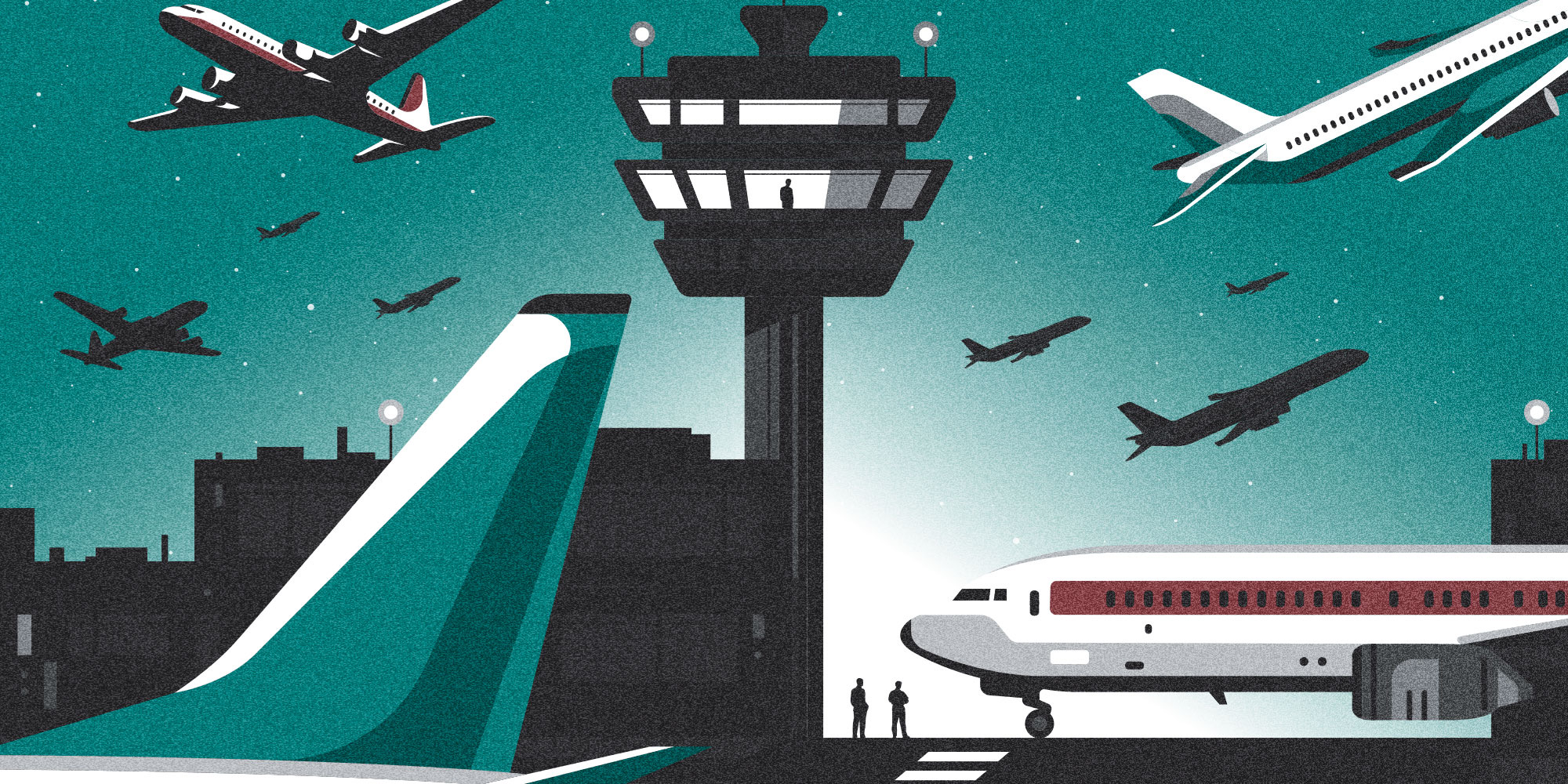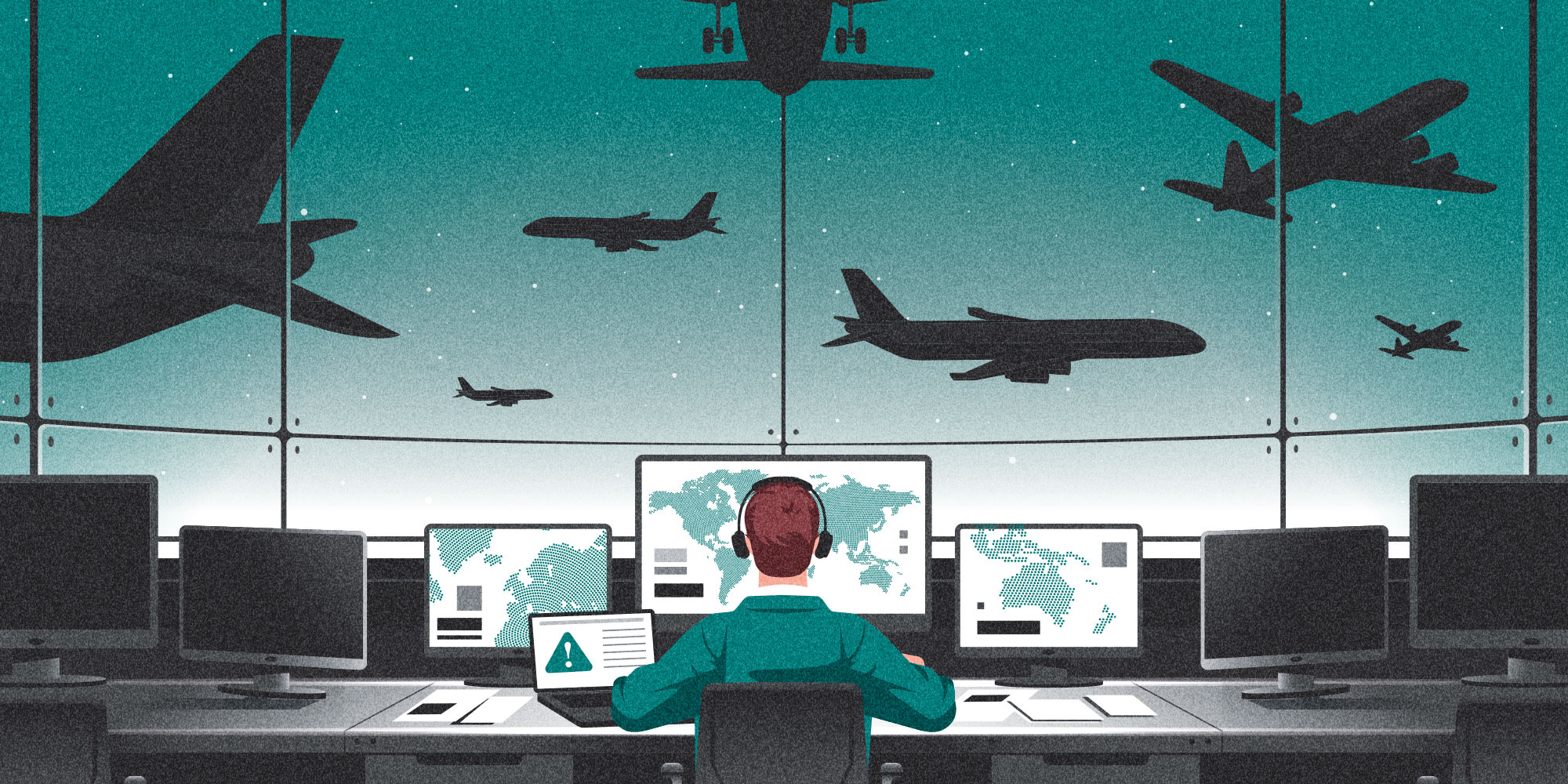
Get a year of super-useful advice
Who to book with, how to get the best deals plus inspiring destination ideas from the experts, for only £36.75 for the year – that’s 25% off.
Join Which? TravelOffer ends 8th January 2026

The taxi turned up. Security went smoothly. Passport in hand, you arrive early at the airport gate because nothing is going to stand between you and the holiday you’ve waited all year for… until the departure board flashes red. Your plane is delayed, and the waiting game begins.
It’s not just bad luck – flight punctuality has got worse.
When we checked departure data for six of the biggest airlines between May 2024 and April 2025, all were less punctual now than pre-pandemic (2019), according to flight data from airline regulator the Civil Aviation Authority (CAA). And the cause of much frustration at the airport is neither straightforward nor what you might expect.
This article first appeared in full in the September edition of Which? Travel magazine
Tui was the worst of the six big UK airlines we reviewed for punctuality (takeoff within 15 minutes of schedule) between May 2024 and April 2025, with the lowest average percentage of on-time departures. It also had the second-highest percentage of delays over three hours, after Wizz Air.
In 2018, an average of 70.7% of Tui’s departures were on time, but by 2022, that had slipped to 42.6%.
And although it’s improved in recent years, Tui still hasn’t fully returned to its pre-pandemic level of punctuality. Second-worst for punctuality from May 2024 to April 2025 was Wizz Air. Its average on-time rate was already as low as 66.8% back in 2019, and by 2023 it had plummeted to 55.6%. It has now returned to its 2019 levels.
It’s a similar story for Ryanair, whose average on-time departures were at 77.8% in 2019 and fell to 63% by 2022, only recovering to 66.5% by 2024-25.
Even British Airways, which tops our table, has slipped significantly. Its punctuality was at 71.5% in 2019, and 75.8% the year before. By 2024-25, it had fallen to 68.7% – and it’s a similar pattern for easyJet and Jet2. The latest figures can’t tell the whole story for 2025, but they show that average on-time departures across the board have slipped from 2019 levels. Ultimately, this means you’re more likely to be inconvenienced by delays in 2025 than in 2019.
But why? Technology has come a long way. Peak travel flight prices are on the rise. It’s reasonable to expect things to get better – so why are they getting worse?
| Airline | Punctuality in 2024-2025 | Punctuality in 2019 |
| BA | 68.7% | 71.5% |
| Jet2 | 68% | 81.8% |
| easyJet | 67.8% | 70.6% |
| Ryanair | 66.5% | 77.8% |
| Wizz Air | 66% | 66.8% |
| Tui | 59.2% | 67.2% |
Table notes: Departures within 15 minutes of scheduled departure from UK airports, from 2019 and May 2024-April 2025, from CAA data
Ryanair says you should blame air traffic control (ATC), the national agencies that guide planes safely in the air and on the ground. In May, the airline launched a website called Air Traffic Control Ruined Your Flight, along with a League of Delays, claiming to expose the worst ATCs across Europe for delays due to mismanagement and staff shortages from January to May 2025.
But does Ryanair’s campaign reveal the full picture? Eurocontrol, which speaks for the European network, admitted that in some parts of the network, the number of ATC officers is 10-20% lower than would be needed to manage the demand.
While it said there is no immediate staffing problem in the UK, ‘air traffic controller shortages in the network, whilst location specific, cause delays across the whole airspace, adding to the bottlenecks created by high demand alone'.
The UK’s own ATC body, NATS (formerly known as National Air Traffic Services), told us it’s ‘fully staffed and operating normally’. However, there are concerns that ATC might be encountering a ‘retirement bulge’, according to David Avery, national secretary for aviation at Prospect, the union that represents most air traffic control officers in the UK. And re-recruitment is difficult – he estimates that 40% of those who apply fail.
Any possible ATC staffing shortages are only exacerbated by a series of other factors. Some parts of the airspace, through which major airlines fly, are closed off for military or geopolitical reasons. Eurocontrol told us that the crisis in the Middle East has led to traffic becoming unevenly spread, after already losing 20% of airspace following the war in Ukraine. Those complexities add to an already expanding ATC workload.
Airport capacity is another issue. ‘There are physically only so many aircraft you can land and take off on that bit of concrete every hour,’ Avery says. ‘The only way to address that is through national infrastructure decisions, for example, a third runway at Heathrow, a second runway at Gatwick.’

Who to book with, how to get the best deals plus inspiring destination ideas from the experts, for only £36.75 for the year – that’s 25% off.
Join Which? TravelOffer ends 8th January 2026

The factor that airlines might be best placed to exercise control over is their own schedules. In June this year, air traffic returned to pre-pandemic levels – an increase of about 5% from 2024, according to Eurocontrol. And if airlines don’t account for possible delays with back-up plans – such as spare aircraft – and buffer time, delays can mount.
‘Compare this to where we were 10 years ago,’ says Avery. ‘The airlines were putting in a degree of slack to deal with problems at airports, problems with air traffic control, weather – they’re shaving [off] those margins.’
While ATC staff shortages may contribute to delays, the issue is further aggravated by airlines stretching schedules to the limits of airports, ATC, their own resources and crew.
In some cases, it’s the airlines struggling to stay punctual that are putting on record numbers of flights. For example, Ryanair hasn’t returned to pre-pandemic levels of punctuality; but still scheduled 162,411 flights in 2024, according to CAA data – that’s 24,192 more than in 2019. Wizz Air put on 29,325 flights in 2024, up 3,534 from the 25,791 it flew in 2019.
Some airlines claim their delay rates are due to their reluctance to cancel flights. Wizz Air also told us it would rather delay than cancel a flight, and that some delays are outside its control.
It told us that it’s committing to ‘enhancing the resilience’ of its operations to minimise cancellations and reduce delays. It said that the percentage of delayed flights is also decreasing year-on-year.
TUI said: 'We want to be more punctual, but we also keep our credo to never cancel.' It told us delays sometimes happen because it ‘needs to get a replacement aircraft ready’ in order to avoid a cancellation. It added that within its fleet of 130 planes, it has 11 spare and that ‘other airlines have or use the possibility to cancel flights, which then would also not be part of the delay statistics anymore’.
Ryanair and BA didn’t provide a comment.
Whether there’s a relationship between an airline’s cancellation rate and punctuality is unclear. It’s true that BA, while the most punctual, cancelled 2.33% of flights between May 2024 and April 2025, while Wizz Air cancelled 0.74%, and Ryanair and Tui cancelled 0.21%. But Jet2, which ranked second best for punctuality, cancelled the smallest percentage of all, at 0.12%, while easyJet cancelled 1.05%.
EasyJet told us it ‘always does all possible to get our customers to their destinations on time and minimise any delays, despite flying in some of the most congested airspace in the world’.
Despite increasing flights year-on-year, the League of Delays tells passengers that the solution is to write complaints to MPs to ask for greater government investment in ATCs. But would it make a difference?
‘Not for 10 years plus,’ says John Grant at travel data provider OAG. ‘If we’re putting more traffic in the skies from the UK, we’re either using more regional airports, or we’re squeezing the last drops out of the number of flights we can have at Heathrow or Gatwick. We need more runways, more coordination with Europe and more common European airspace.’
The UK’s ATC service, NATS, is primarily funded by levies on airlines – it says around £2.08 per plane ticket on average. That price is controlled by the CAA. But while Ryanair publicly advocates for fixing ATC staffing issues, in the past it’s supported the idea of paying less in the process. For example, when the CAA was setting price controls for 2023-2027, Ryanair stressed the importance of speeding up training cycles to make sure capacity met demand.
In the same letter, it supported slowing the growth of ATC wages and reducing ATC’s determined costs (ie its budget). But as Anthony, a former UK ATC operator, pointed out, it’s hard to quantify ATC success in terms of productivity. ‘We’re not producing anything – our product is safety.’
In response to the CAA’s consultation on price controls in 2024, easyJet pushed for ‘affordability’ in future 2028 price controls, while saying that ‘appropriate quality of service must be ensured’. BA told the regulator that the last set of price controls didn’t prioritise affordability, cost efficiency and economy enough. We asked all three airlines about this, but they didn’t provide further comment.
‘The industry accepts it will never – and doesn’t want to - operate at 100% punctuality,’ explains Grant, who says shareholders would question why a fleet would have spare aircraft available to achieve this. OAG’s website says: ‘Most people in the industry would accept that an on-time performance of 80% or above is pretty good. That’s four in five flights arriving within 15 minutes of their scheduled arrival time.’ But most of the big airlines are currently far from that benchmark, so why do they keep putting more planes in the sky?
If your flight’s ever been delayed by more than three hours, you may have been entitled to compensation. But airlines aren’t responsible if the delay was outside their control – for example, those caused by unpredictable weather or, crucially, delays they claim are caused by ATC.
The catch? It’s hard for passengers to find out the official reason for a delay, and many travellers don’t challenge an airline’s decision or escalate it through the Alternative Dispute Resolution (ADR) scheme.
This means thousands of valid compensation claims likely go unmade. A Department for Transport study in 2021 found that 85% of delayed flights could have been eligible for compensation, while NATS told us that in the past month, 99.2% of UK flights had no NATS-attributable delay. This means it’s worth pushing back if an airline refuses to pay out compensation.
Short-haul flights have become less punctual. And as more flights are introduced than infrastructures can cope with, disruption will probably worsen. From airline factors to weather, airport limitations to ATC issues, delays often happen because of a chain reaction.
John Grant told us that it’s not in an airline’s interest for flights to be late: ‘They do all they can to operate on schedule.' But perhaps airlines will be proactive about reducing delays only if they affect their profitability – in other words, when the cost of paying out compensation is greater than the cost of taking precautionary measures.
And that will only happen when passengers can more easily find clear, accessible, transparent information about the reason for every single delay.
If an airline says a delay was caused by ATC, it can be hard to work out whether that’s true. So, while airport infrastructure and better staffing could alleviate delays, NATS told us in the past month that 99.2% of UK flights had no NAT-attributable delay.
So, don’t take an airline’s first answer on compensation. Also, try using Aviation ADR (which is free), or for BA, CEDR, which charges £25 if your claim isn’t successful.
Not only could you be refunded hundreds of pounds, you could also help to make punctuality more of a priority for airlines, too.